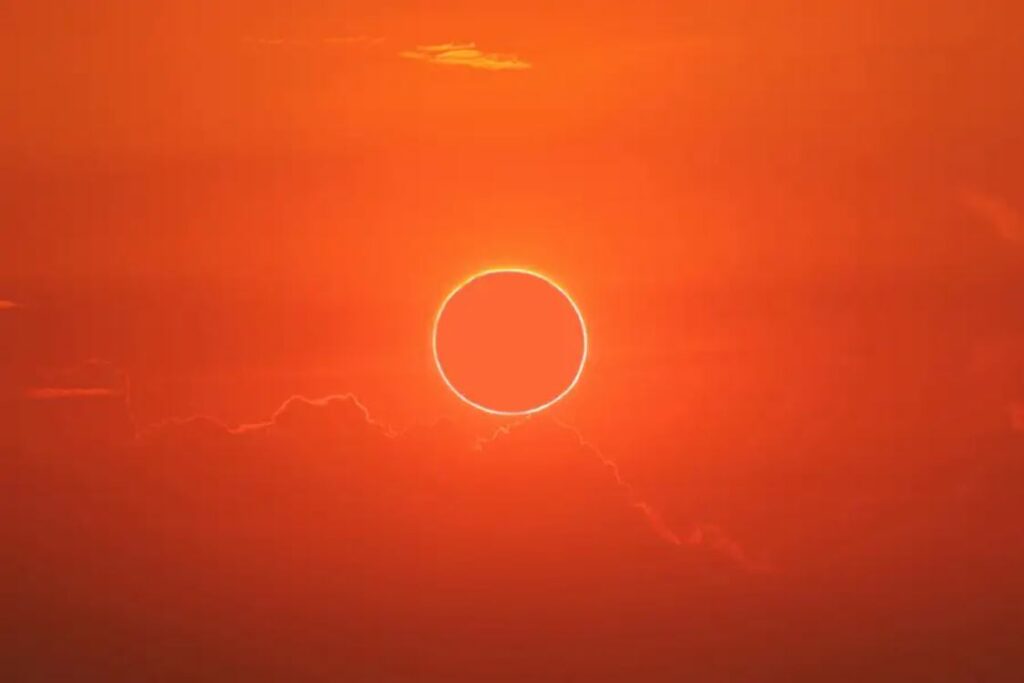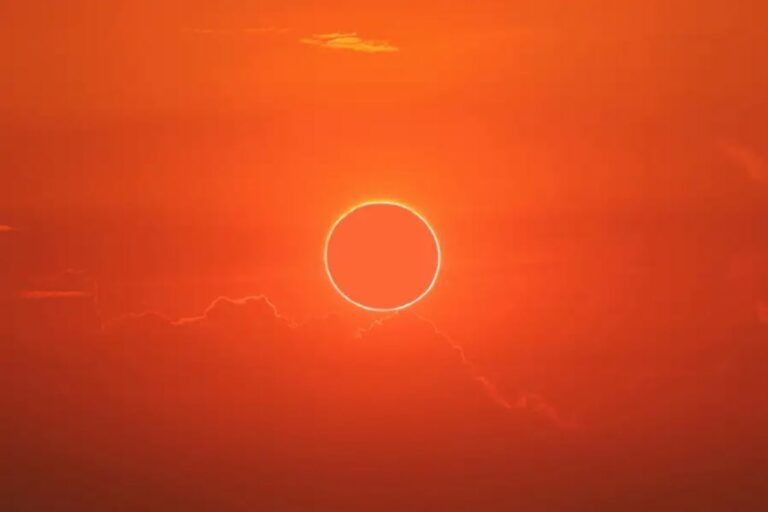Identifying the ‘Ring of Fire’ Solar Eclipse in October Across the Americas: A Guide
An annular solar eclipse, also known as a “ring of fire” eclipse because of the way the sun and moon line up, will be visible in the US, Central America and South America on 14 October

Darkfoxelixir/Shutterstock
An annular solar eclipse is passing through North and South America on 14 October. Annular eclipses, also known as “ring of fire” eclipses, occur when the moon doesn’t appear quite big enough in the sky to cover the entire sun in a total solar eclipse, instead leaving a bright ring visible around the edges.
Solar eclipses happen when the moon passes between the sun and Earth, casting a shadow over an area of the planet as it moves. The moon’s orbit isn’t perfectly circular, so its size in the sky changes slightly over the course of each month. Total solar eclipses occur when the moon is close enough to Earth that it appears just as large as the sun in the sky. Annular eclipses occur when the sun, moon and Earth line up perfectly, but the moon is just a bit too far away to appear big enough to block the sun entirely.
At the height of the eclipse on 14 October, the moon will cover 91 per cent of the disc of the sun. This will be visible across the western US, and the best places to view the spectacle there will be along a path running through Oregon, Nevada, Arizona, New Mexico and Texas. The eclipse will also pass through Mexico, Belize, Honduras, Nicaragua, Costa Rica, Panama and Colombia, before sweeping across Brazil.
The annular eclipse will be visible along a strip of Earth just about 200 kilometres wide, and the best viewing locations will see the eclipse for up to 5 minutes and 17 seconds. Areas outside that narrow path will see a partial solar eclipse, in which the moon doesn’t line up just right to produce a ring of fire. The partial eclipse will be visible across most of the US, Canada, South America, and even the western edge of Africa.
Annular solar eclipses occur somewhere in the world every year or two, similar to the frequency of total solar eclipses. The next total eclipse will be on 8 April, 2024, and it will follow a similar path to the upcoming ring of fire eclipse, passing through a swathe of the Americas.
Source: NewScientist
Do not forget to share your opinion with us to provide you with the best posts !




0 Comments